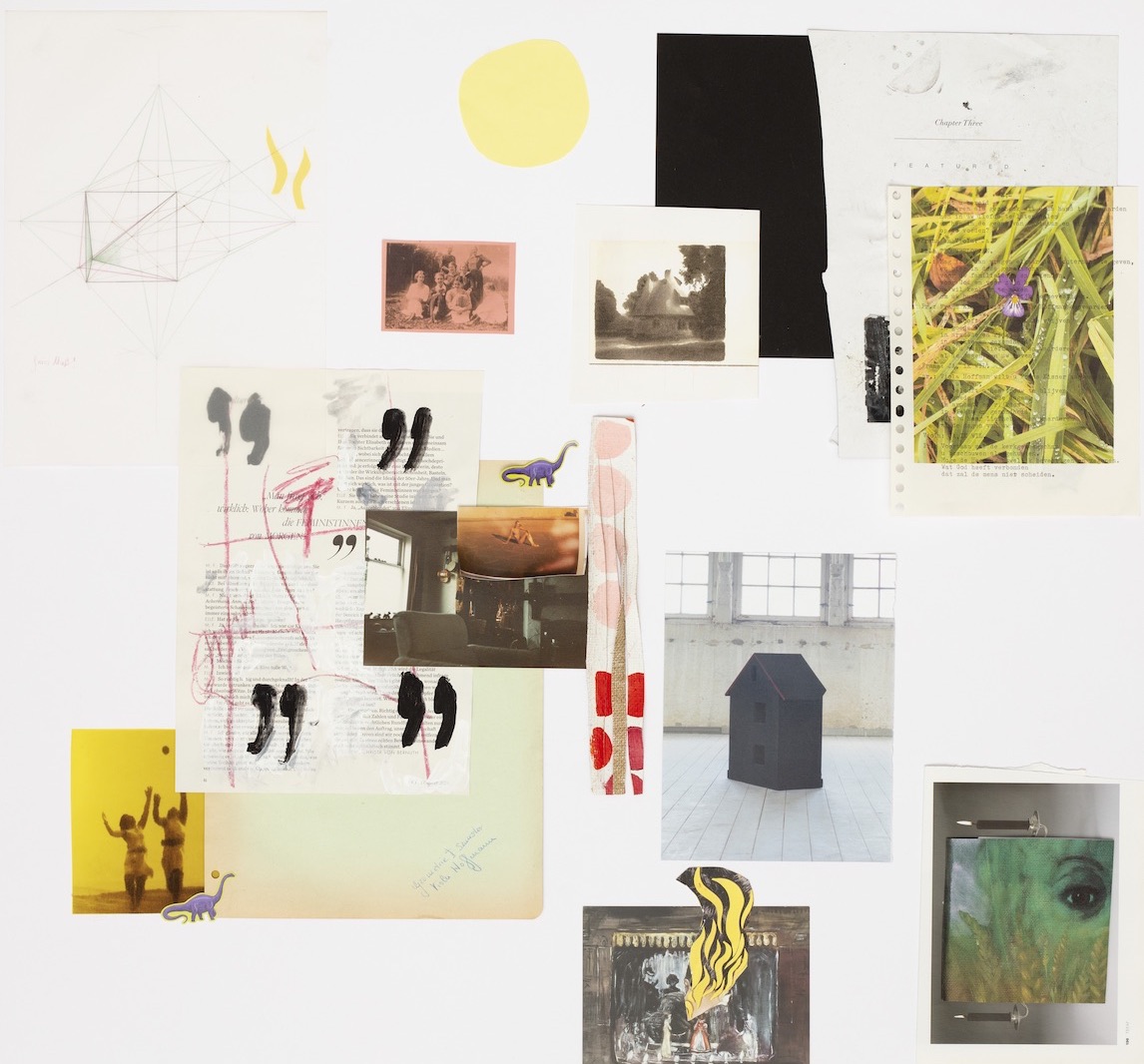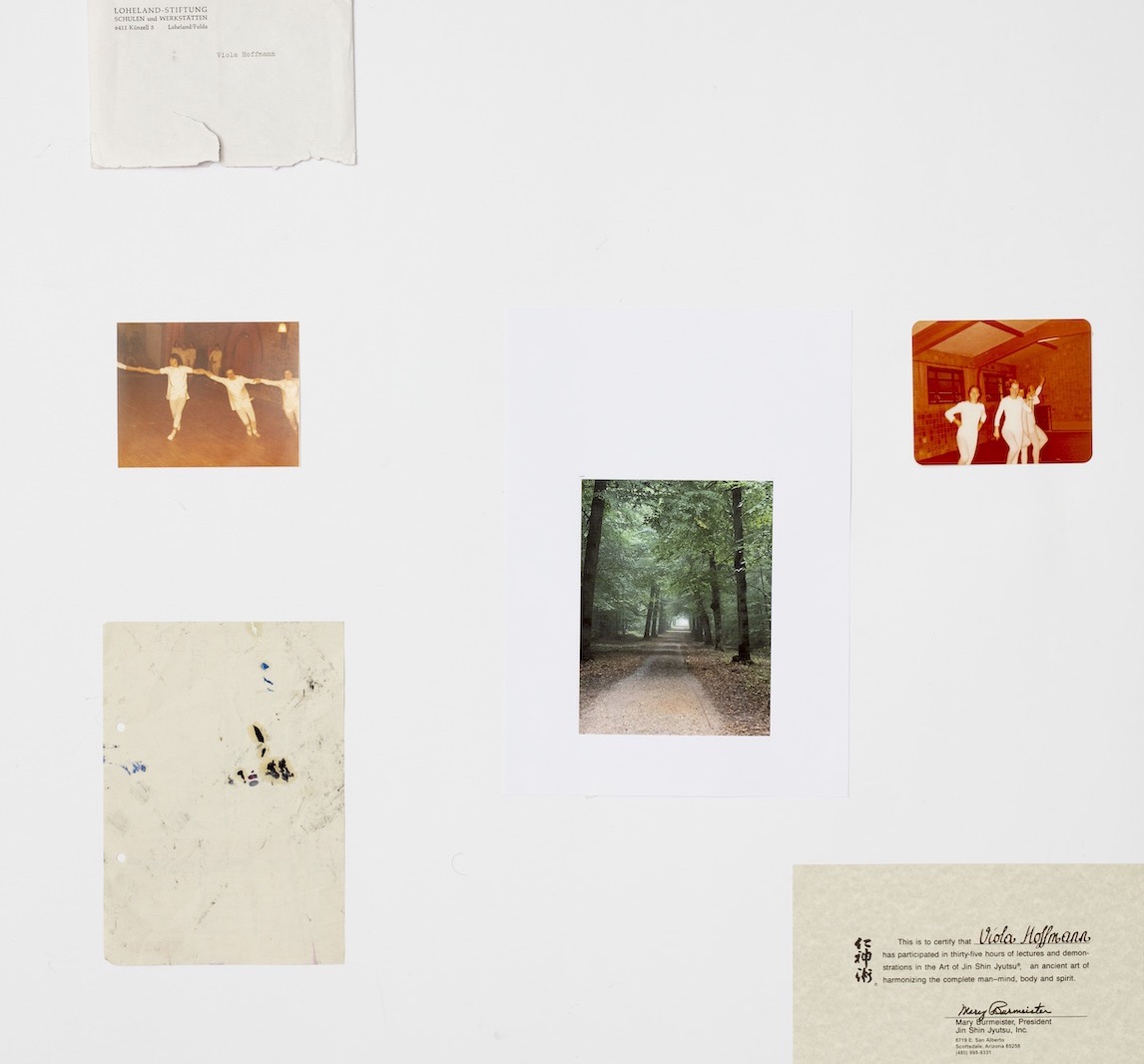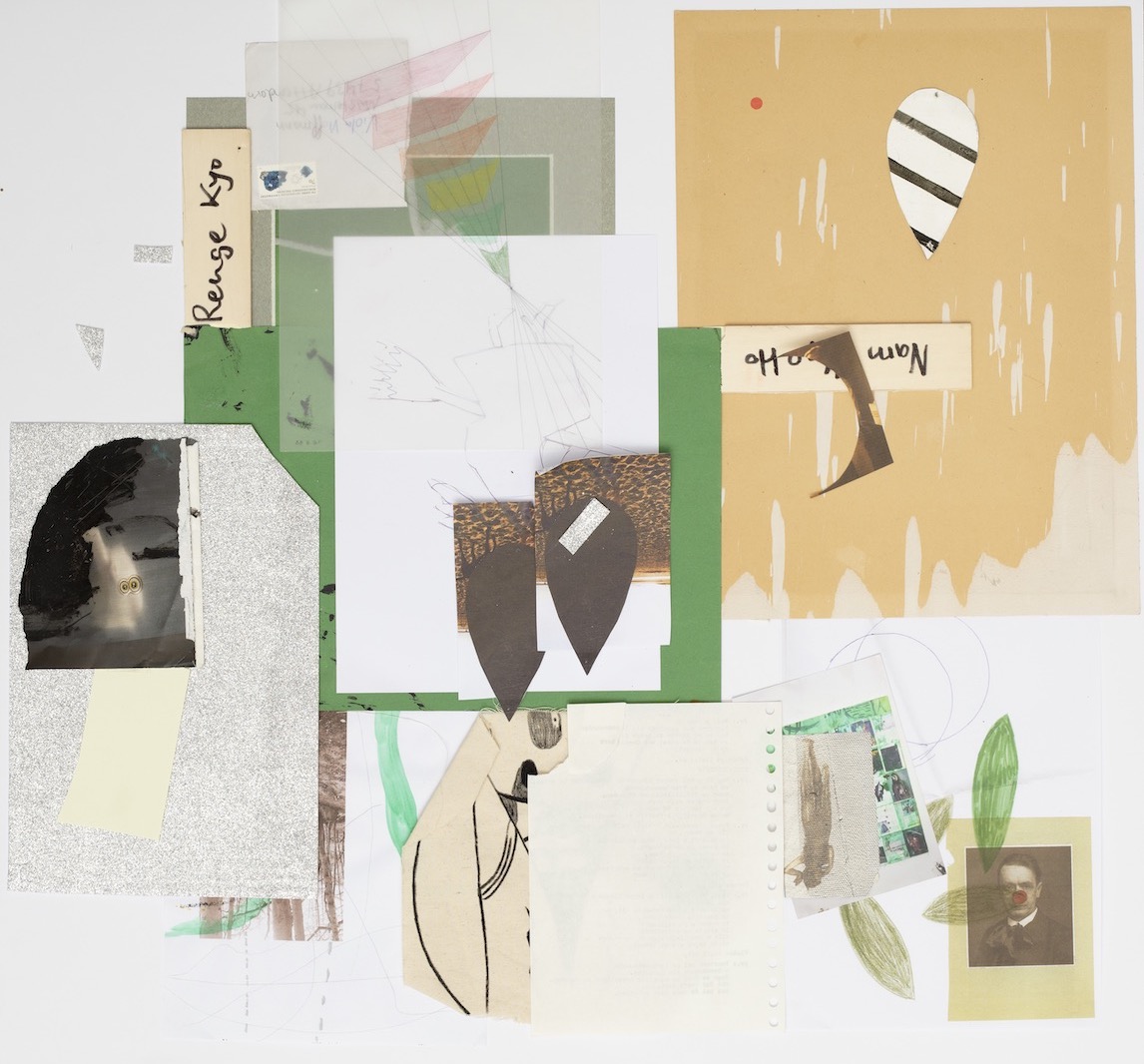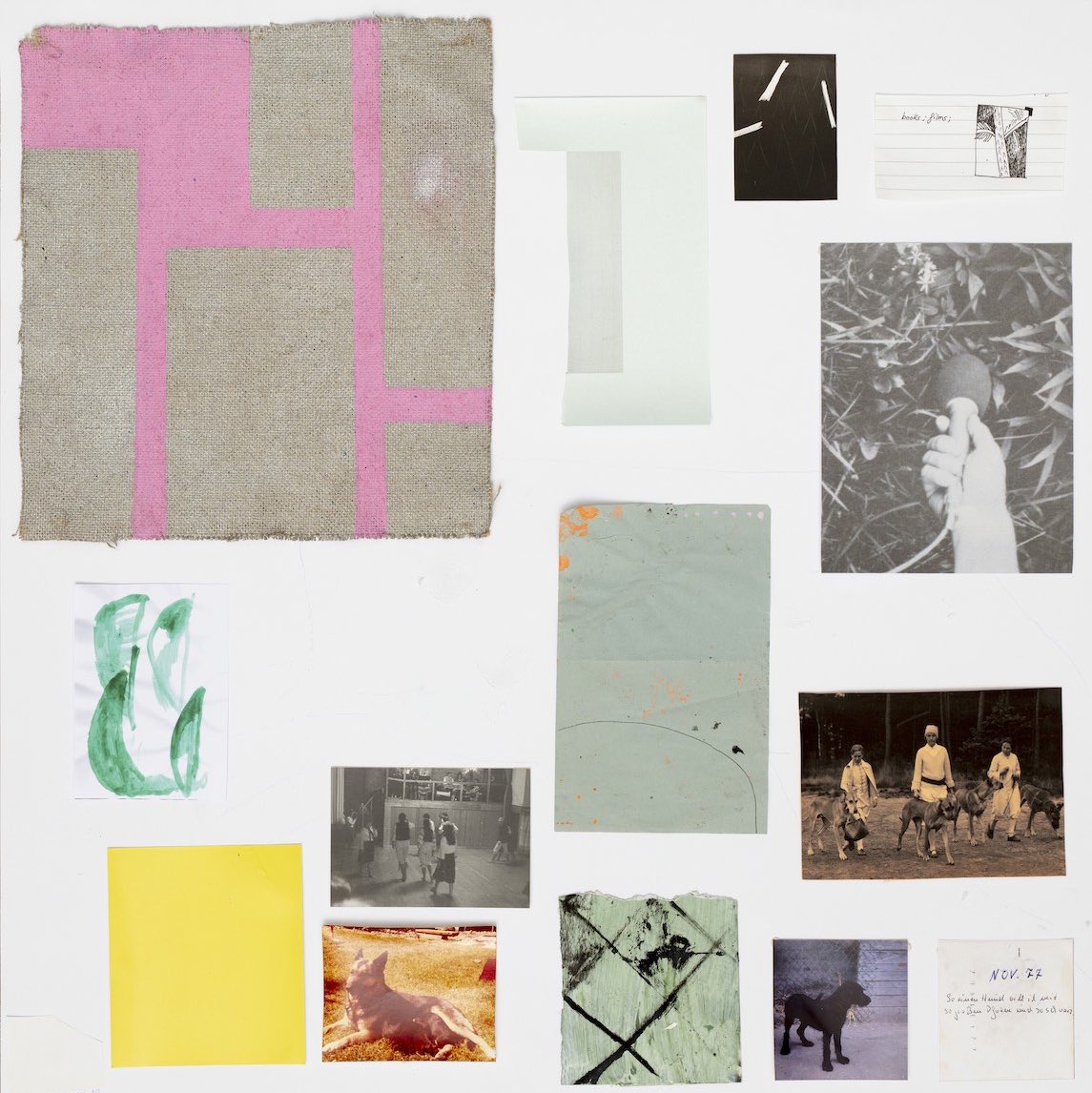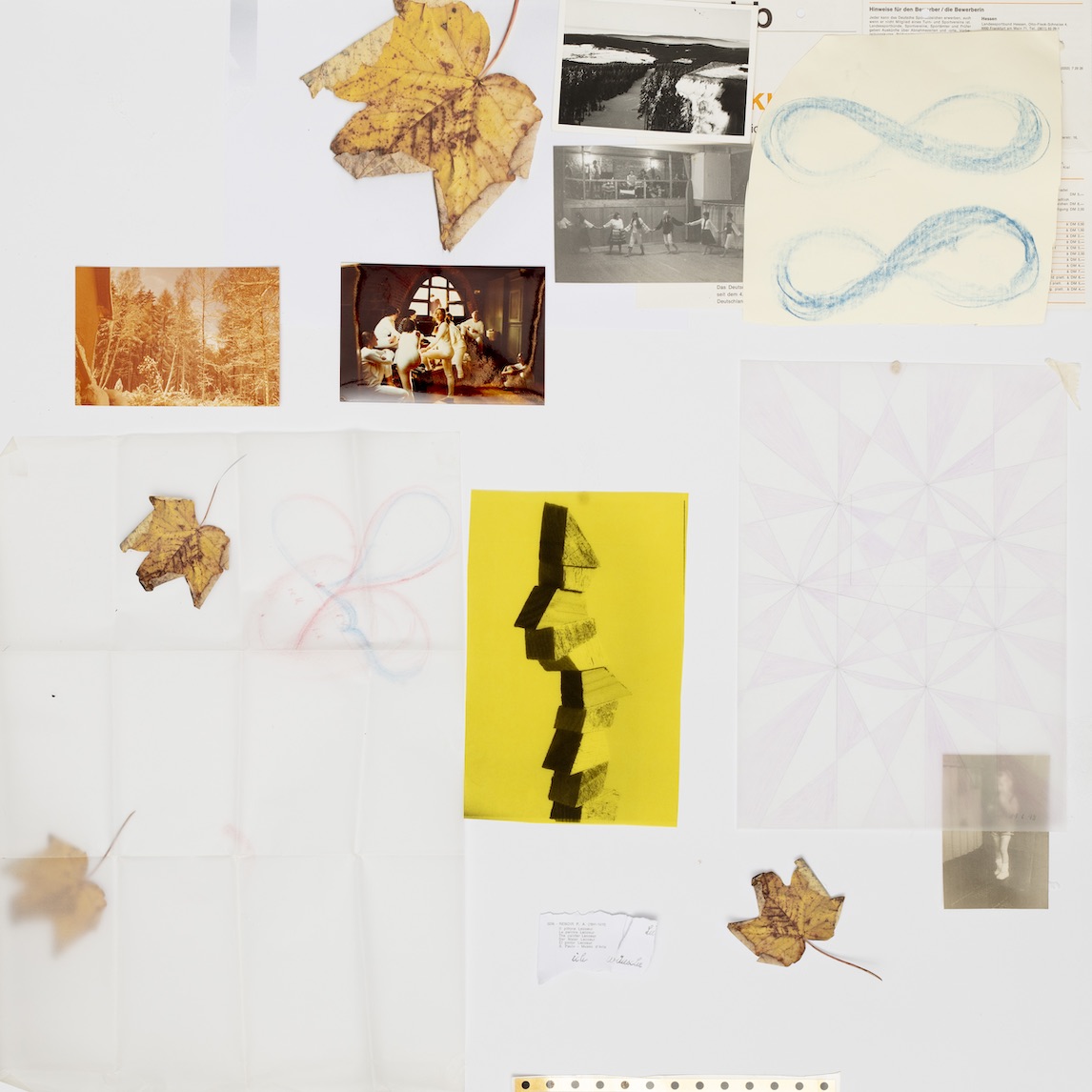
Judith Kisner
NADA New York
MAY 5—8, 2022
GOLESTANI is pleased to announce the participation at NADA New York 2022 with a solo presentation of collages and paintings by Judith Kisner, that discover the Loheland settlement project – a center of utopian artistry and intellectualism, that was founded a century ago in 1919 as a space for women to combine art, movement, work, leisure and learning.
Loheland was a teaching, learning and working community characterized by a natural, holistic way of life that was primarily geared towards the development of female physical culture.
The pedagogical concept of historical Loheland, anchored in the spirit of life reform movements at the beginning of the 20th century, which wanted to counteract the alienation caused by industrialization, is based on the idea of a unity of body and mind. If the body is trained, this has an impact on the spiritual, on the inside of the human being, according to the credo. Gymnastics was considered a holistic discipline. The experience, the self-awareness of one's own body, of the body in space, was at the core of the training. This preceded all other forms of learning, especially theoretical. The body experience was supplemented, or rather continued, through modeling, the so-called dynamic drawing, which was developed in Loheland, through geometry, statics, drama, music and philosophy. "Through movement," says Louise Langgaard, one of the founders, "we find access to other people." In Loheland, it was about leading young women to adopt a self-confident attitude and to an enlightened body awareness, and in this respect, society for the realization of ideas Since there was hardly any space of this kind, Loheland as a collective settlement project should also be understood as a lived-in utopia by women.
Judith's mother, Viola Hoffmann, belonged to the group of women who were taught this special tradition locally: she attended the Loheland Vocational School for Gymnastics from May 1978 to April 1981 and left with the authority to use the title "State-certified gymnastics teacher for the free profession". She was a "Lohelander" with body and soul, because as Judith relates, Viola Hoffmann gave gymnastics lessons until shortly before her early death–at the express wish of her students.
The Loheland settlement was not only a living space, but also served to provide women with professional qualifications, including gymnastics training and employment in photo workshops. In this context, the collective also produced numerous artistic positions for dance and fine arts and maintained correspondence with members of the Bauhaus, among other things. The fact that the Lohelandsiedlung still exists today and for decades was a point of attraction for women in the Federal Republic of Germany who were interested in holism and reform education is reflected in Kisner's collage materials, which dealt extensively with the historical background of the settlement and its residents.
In terms of content and visuals, Judith Kisner's works transfer the concept of the settlement as a place to work, create and live–as an alternative space for women–into the format of the collage. With her compilation of the most diverse research materials, the artist creates a meeting point between drawings and photographs, sketches and notes, which not only establish loose content-related, but also formal-aesthetic references to one another. Black and white and colourful, lettering and application of colour: Like a collection point, Judith Kisner's collages combine motifs and materials which at first glance seem incoherent, the content of which results from the reappraisal of the life and work understandings of the "Loheländerinnen" in the Rhön area.
Judith Kisner meets the challenge of how we can approach the historic town of Loheland and its residents today, as an artist, from the autobiographical side, by weaving her personal story and that of her family with historical images and facts. Despite all the ambivalences that arise from the medium of collage with regard to the question of authorship, this undoubtedly ensures a synchronicity of different voices and perspectives.
In her collaged archives, Kisner gives form in particular to the spiritual and ideological self-image of the “Loheland women”: Geometric drawings and sketches meet notes on apparently anthroposophical, astrological, curative education or esoteric concepts that, concretely or figuratively, correspond to the holistic program of the “Lohelandsiedlung” corresponded. The references are manifold: a black-and-white photograph of the Swiss Goetheanum of the General Anthroposophical Society is included, as well as individual leaves of dried foliage, infinity symbols or a certificate for gymnastics training in “Loheland” that has faded over time.
Part of the freedom concept of the "Amazons" of the Loheland settlement was the self-imposed seclusion of the province with all the resulting relief such as inconveniences, life in harmony with and dependence on nature. Dried leaves are used in Kisner's collages, as well as nature photographs and images of stone settlements that the "Women of Loheland" built from materials in the immediate vicinity. As with dance and the observation of natural movements, which are so important for the “Amazons”, the motifs in some of Kisner’s works form a moving, loose dance, in others they stand rigidly symmetrically opposite one another, are painted over or stand alone in the white emptiness of the picture ground.
Judith Kisner's sometimes strikingly graphic painting is also characterized by an examination of nature–by a literal outline. With sketching and hatching lines, Kisner's brush seeks and creates the organic in the abstract–or vice versa. In this way, Kisner is able to use black and colored strokes to make landscapes emerge from the white canvas by purely suggesting curves and jags. Impressions of peaks, trees, hills and floating in the empty pictorial space, whose white surface sometimes sharpens the profile of the vegetation. Painted over by wild strokes, forms lie as if separated behind a veil of colored hatching or transparent color fog. Meanwhile, other lines remain completely detached from the form, so that locating and conceptually assembling the abstract strokes always remains an open effort without conclusion.
__
Judith Kisner (b. 1983, Dutch) studied painting in the class of Tal R at Kunstakademie Düsseldorf and at the HfBK Hamburg with Jutta Koether, where she graduated with an MFA in 2019. Kisner has already been awarded numerous prizes, including most recently the art prize of the Sparkassen-Kulturstiftung in 2021, the Clausen Simon Foundation in 2020, the Germany scholarship fine arts award in 2019, and a sponsorship award from the HfBK Hamburg in 2018. Her work was exhibited in the Wasserburg Sachsenhagen, Atelierhaus Trittau, c/o Schocke, Hamburg; Arti et Amicitae, Amsterdam; HfBK Hamburg; Pragovka Gallery, Prague; Golden Pudel Club, Hamburg; W139, Amsterdam; Tonenton Gallery, Copenhagen; Suzhou Art Museum; Shenyang Lu Xun Academy of Arts; OK. Terrain, Hamburg; Sichuan Institute of Fine Arts, Sichuan; Benzene, Hamburg; CFA Gallery, Berlin


